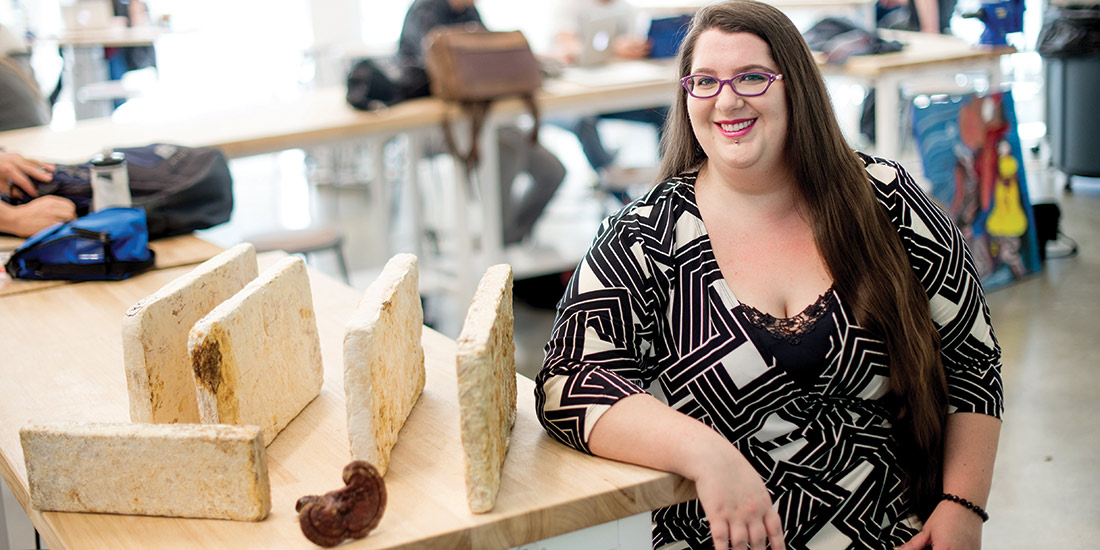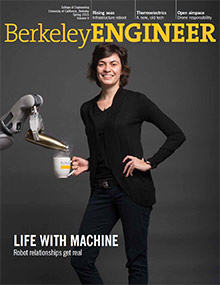
Grow your own
Mycelium, the sprawling, thready, root-like part of a fungus (the mushroom parts are fruiting bodies) are fast-growing and easily manipulated into shapes and forms. While several commercial applications for mycelium-based materials are already on the market, little is known about the material’s properties.
“I have never seen such a low-cost, low-impact material. That’s what caught my attention, the idea that it is completely sustainable, and literally mushrooms.”
– Sonia Travaglini, mycology materials engineer
“Before now, people who used this material intuitively knew how strong it was,” says Sonia Travaglini, a mechanical engineering Ph.D. candidate, “but no one had done the research to say, ‘yes, you can pile so much weight on it before it will fail.’ So that’s what I’m researching — the material properties — particularly its strength, crushability, toughness and maximum use temperature.”
Mycelium’s strength comes from chitin, the structure the fungus builds to support itself. This chitin, the same material that constitutes beetle shells, will digest a substrate, which could range from sawdust to coffee grounds. The result, if grown in a form, is a durable matrix that can be further worked or molded with tools.
Currently working out of Jacobs Hall, Travaglini is collaborating with Phillip Ross, the founder of a project called MycoWorks, a Silicon Valley-based design and engineering firm working to make mycology materials more accessible.
So far, the emerging applications for this ancient material range from packaging and building insulation to furniture and core material for veneered plywood. Life-cycle sustainability makes these materials economically attractive to certain industries. “What really surprised me about mycelium is that it can grow off waste,” Travaglini says.
Read more: Defining the original smart material

